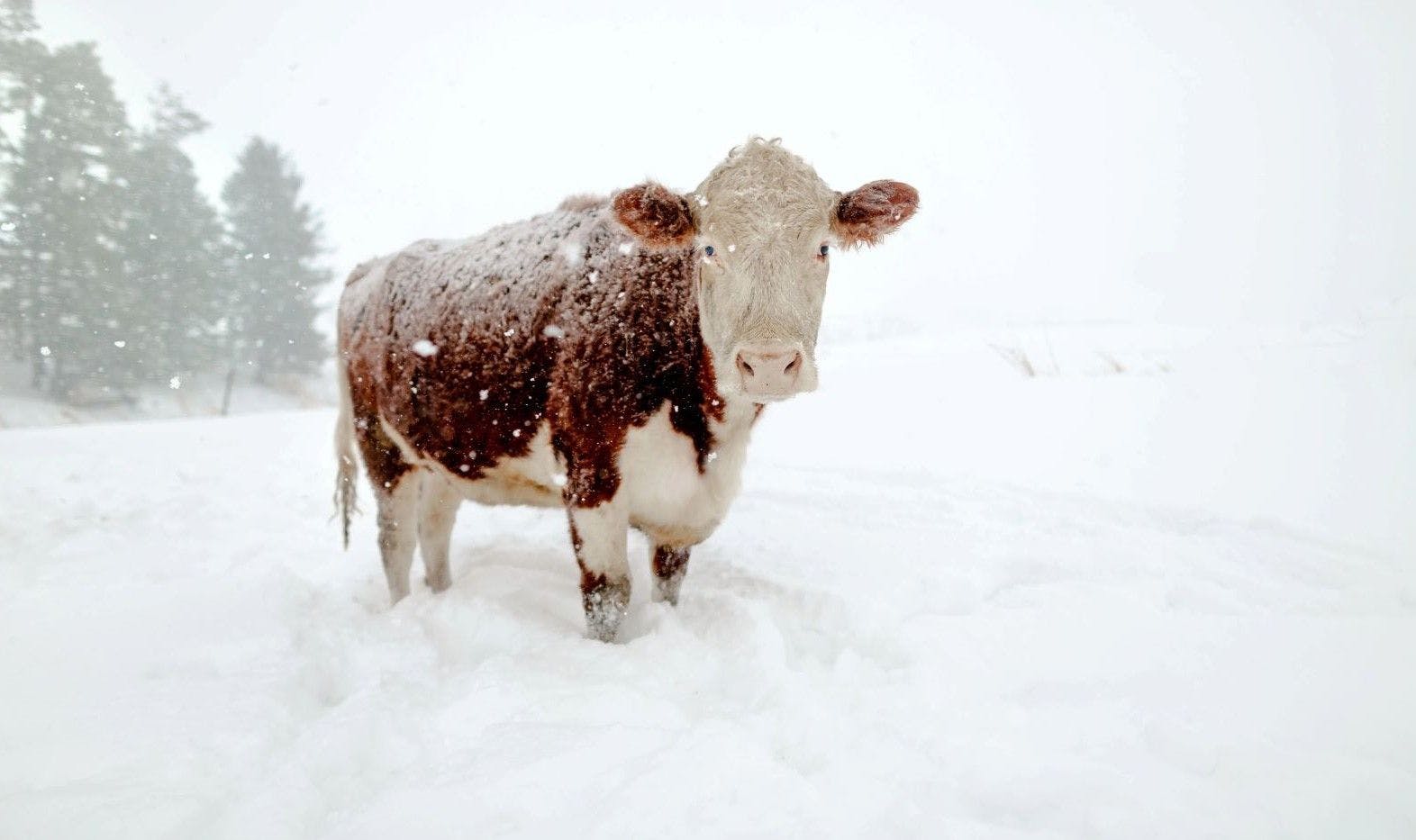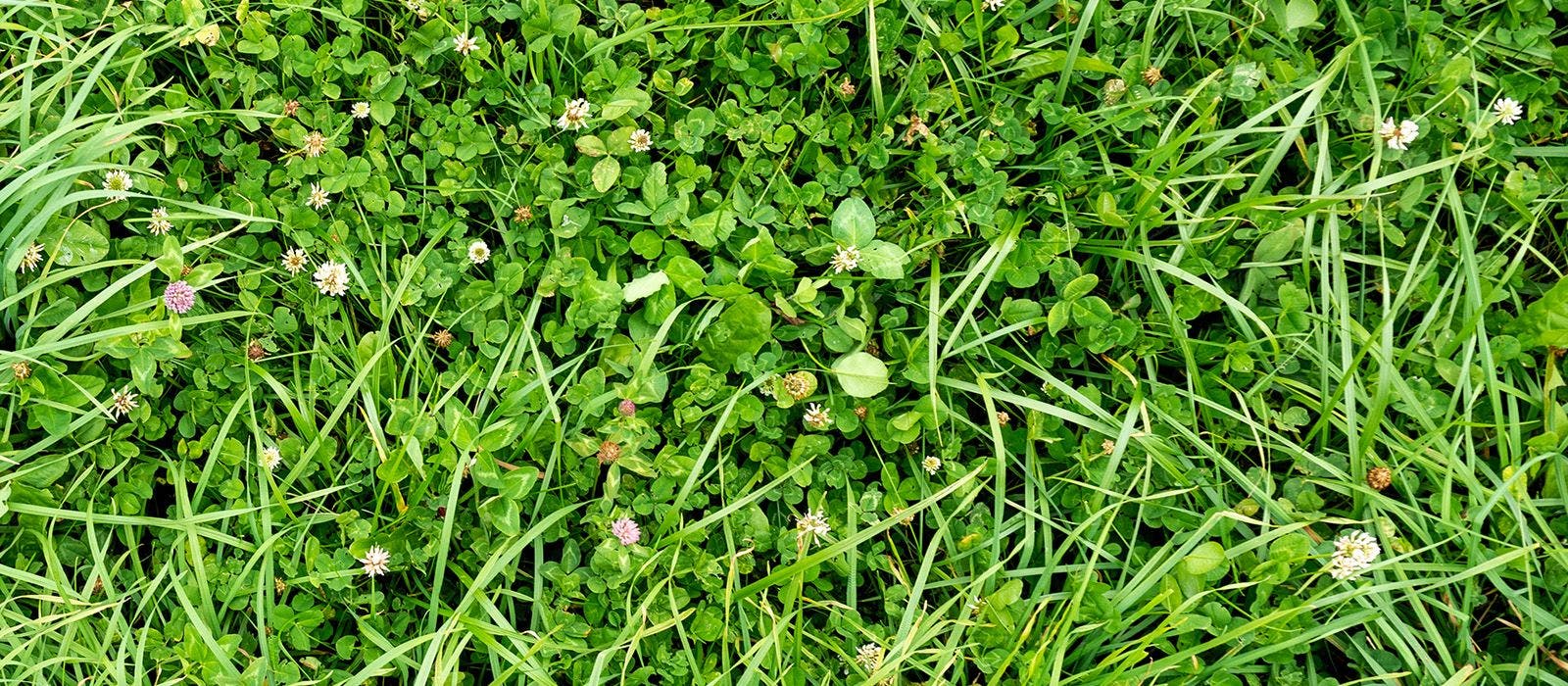
Farming
What Happens When Dairy Cows Hit the Hay? All About Sleeping Cows
There are a lot of things farmers can tell you about a cow, like its name, if it’s ready for milking and its favorite place in the barn. They can’t tell you what’s going on in a cow’s head when it’s nap time!
Cows like to eat fresh clover and pasture greens, lie around on their bellies chewing their cud and watch the clouds (OK, that’s an assumption). They also need shut-eye — but not nearly as much as humans.
How Long Do Cows Sleep?
Cows spend more time dozing than actually sleeping. Cattle sleep about 4 hours a day. Less than 1 hour is rapid eye movement (REM) sleep, according to the University of Kentucky.
Does it need to be dark for cows to sleep? Nope. Of the four hours cows sleep, most of the sleep occurs overnight but cows are known to split their sleep time between day and night. Just like humans, sleep time varies from cow to cow and day to day.
Four hours of sleep may not seem like much, but cows spend plenty of time resting — about a third of the day, according to Cornell University.

A tired cow naps on the Settlage family farm in Ohio.
Do Cows Sleep Standing Up?
People often wonder if cows lie down to sleep. The answer is yes. A cow must lie down to sleep. They can stand during non-REM sleep, but they can only achieve REM sleep while lying.
You may see a cow sprawled out on its side soaking in the sun, said Organic Valley farmer Greg Bingham of southern Idaho. Cows typically sleep lying down with their legs tucked under them — kind of like a dog’s sleeping position, he added.
During non-REM sleep, cows may lie down on their bellies with their heads raised, making it hard to distinguish them from cows in other sleep states. (So maybe it’s not our fault we had trouble catching a glimpse of sleeping cows in the video below!)
Scientists have gone as far as studying if cows prefer sleeping on their left or right side! In case you are curious, cows showed a slight preference to one side in this study.
Do Snoozing Cows Mind Being in Videos?
One thing we learned at Organic Valley is that it’s not easy getting a photo of a sleeping cow.
As the team started working on this story, the resounding question was, “How do we get a photo of sleeping cows?” We scoured thousands of photos of cows on Organic Valley farms, we reached out to farmers asking them to get sneaky and capture a photo or video of sleeping cows, but alas, farmers are not very sneaky or maybe it’s just hard to tell if a cow is asleep.
Check out this video of our farmers’ efforts and then read on to learn more about the nightlife of cows and their sleeping habits.
Do Cows Dream?
Bingham doesn’t want to be on the record saying cows dream, “because I don’t know.”
“I know my dog dreams, because he is sound asleep and his tail wags and legs are fidgeting, but I’ve never seen a cow do that,” he said with a chuckle.
Even scholars can’t confidently answer the question of “do cows dream?” According to the National Library of Medicine, after studies they found no firm answer on whether non-human mammals dream.
It’s pretty evident to Wisconsin farmer Kevin Mahalko when a cow is sleeping, but dreaming — not so much.
“I would think they dream, because something is going on in their head for sure,” he said.
Where Do Cows Sleep?
It all depends. Cows always have access to the outdoors on organic farms; it’s a federal requirement (except under specific conditions like dangerous heat and weather).
Sometimes the cows prefer to lie in the barn and snooze, but when the weather is agreeable they seem to prefer a nice grass bed. Unlike many humans, cows are not as devoted to a particular “side of the bed.” They do have the advantage of acres to choose from.
“If they are relaxed and sleeping, they are happy. They are curled up on pasture with their eyes closed,” Mahalko said.
What Kind of Beds Do Cows Sleep In?
OK, maybe cows don’t sleep in bed, but some sleep on beds when they come to the barn from pasture. Many Organic Valley farmers provide their cattle comfy cow mats made of recycled rubber to lie on. Other farmers use sand, wood chips or straw for cow bedding. Some farmers even have waterbeds for their cows!
Farmers provide cushy quarters in the name of cow comfort and there are often regional differences in bedding, depending on resources.
The Bingham family provides sand for the cows to relax on. You know how it feels to relax on the beach! Sand is easy on the cows’ joints and is a disinfectant of sorts, Bingham said. Sand is also plentiful on his family farm. There are hundreds of acres of pasture for the cows to enjoy and just enough sandy areas to use for sand bedding. The Binghams take sand from their land to fill the cows’ sleeping spaces in the barn. They rotate in new sand every week or so to keep the cows nice and clean.
Is Cow Tipping Real? We Are Glad You Asked
Let’s get this one out of the way. There is the urban legend of cow tipping — sneaking out at night and pushing over a standing, sleeping cow. Cow tipping is a myth. Cows’ legs do not lock when they are standing, and it would be quite a struggle to push over a 1,400-pound bovine.
In fact, if you were to sneak up on an Organic Valley cow — which is unlikely, because they are pretty observant — there’s a good chance it would try to lick you or give you a curious look, turn and mosey on its way.
Do Sleeping Cows Snore?
Some cows are heavy breathers when they sleep and yes, some cows do snore. When they fall into a deep sleep, cows may also have rapid eye movement and muscle twitches.
Hushaby, Time to Close Those Big Beautiful Eyes
Cows have many of the same basic survival needs as you and I: air, water, food and sleep. While humans can wake and share stories of sublime dreams with friends, we may never know what goes on in the heads of bovines when they lie down and close their eyes.
On Organic Valley farms, we hope we are making cows’ dreams come true every day — dreams of bountiful pastures, companionship and lazing the day away.
An antique typewriter fanatic and chicken mom who treasures time outdoors admiring all that nature has to offer, Jennifer McBride is Rootstock’s editor. McBride spent 15-plus years as a journalist and newspaper editor before finding her niche with the nation’s leading organic dairy cooperative. Contact her at Rootstock@organicvalley.com.
Related Articles
- Tags:
- animal care,
- farm life


















